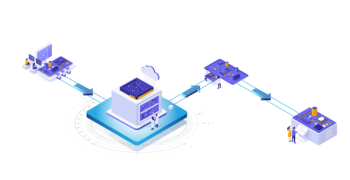Crafting Intelligent Systems with BDD and Use Case Analytics

Renowned American investor, entrepreneur, and software engineer Marc Andreessen once said, “Software is eating the world.” Perhaps today he feels seemingly overwhelmed, realizing the fact that software has gone on from just eating the world to completely engulfing it!
The most fundamental aspect that has contributed toward the indispensability of software today is its ability to work as a differentiator for industries which were once thought to be more labor-intensive. In fact, going forward, as much as 73% of enterprises are expected to operate entirely on the Software as a Service (SaaS) model by 2020. While this revelation signals a prosperous future for software developers, it also instills a sense of urgency in them to embrace robust development platforms with smart testing capabilities.
Quick development and frequent integration of new features are often the most critical requirements of the software applications being currently developed. Businesses are operating at breakneck speed and the software products need to evolve concurrently to satisfy the changing business needs.
The pressure to churn out error-free applications with reduced time to market is, thus, placing increased emphasis on agile testing methodologies. No wonder then that the global discrete software testing market is slated to increase at 14% CAGR with application testing growing at 15.3% and product testing at 9.1%.
Transcending the Traditional – Embracing Behavior-Driven Development
In a software delivery ecosystem, people collaborate to develop a particular product. Quite obviously, communication becomes a crucial aspect of the overall process. And, sometimes even agile methodologies fail to restrict critical downtime that goes behind iterations – a result of developer-client miscommunication.
Not long ago, TDD (test-driven development) was developed to resolve the issue. However, this methodology also has its own set of issues. It often requires developers to define system usage through use cases, user stories, and requirements. The entire process of developing the codes and getting them tested against the original requirement specs of use cases translates into wasted resource and time for both business professionals and engineers. Additionally, with this method managing ad hoc changes and executing the downstream activities to ensure that the applications deliver the desired results also becomes a time-taking job.
In a user-driven landscape, where there is so much emphasis on intuitive navigation and seamless user experiences, testers and developers are looking to embrace a more user-centric approach within their processes. The focus is more on embracing a method that puts testing in the heart of product development to foster a growing collaboration between testers and developers. The advent of novel testing methodologies like behavior-driven development (BDD) serves as a testament to this sweeping trend.
As an outgrowth of TDD, BDD helps developers determine appropriate tests that perfectly reflect the application behavior per requirements defined by the stakeholder(s). At its core, BDD is a highly agile testing method with a sharp focus on user experience. It doesn’t just evaluate machine functions of a particular program without significant interactive input.
The differences that BDD creates might apparently seem to be subtle, but the impact that it creates in terms of end results and testing processes is substantial.
Inducing Human Element and Use Case Analytics to Simplify Testing
No matter how robust a BDD initiative might be, at the end of the day testers would have to feed in tests to verify the system behavior and analyze the application that is being built. This is where BDD sets itself ahead of the league.
Interestingly, the BDD test format comes with a human element. For instance, a code that creates a story-telling approach within the test itself. With this method, developers have the liberty to describe system behavior through a domain-specific language known as “Gherkin”. The BDD approach determines the exact set of behaviors that personifies business outcomes by describing the codes in a way which is easily understandable by testers, developers, and domain experts.
This text-based testing enables programmers to identify what needs to be done from an end user’s perspective, helping them create more navigable and intuitive final product. Additionally, it also makes the interaction between developers and testers more organized, simply because the testing is done through simple graspable coding.
Going forward, BDD is expected to leverage strategic use-case analytics to make software development even more refined. Indeed, there are already several real world examples supporting the assertion. For instance, a leading software enterprise released a new update to one of its offerings suite that would help developers, testers, and product owners with a place to work out real use-case scenarios in a commonly usable tool. This new release added traceability, enabling the administrators to manage use case-stories and data in a separate catalogue, so that problems located during the testing and development process could easily be traced back.
BDD is essentially fostering enhanced collaboration between the core contributors within a software development ecosystem and that too on a real-time basis. Thus, with time, as collaborations begin to get stronger, stakeholders can start expecting even more smart end products that are both sustainable and revisable at the same time.
Disclaimer: Any views or opinions represented on this page belong solely to the blog owner and do not represent those of people, institutions or organizations that the owner may or may not be associated with in professional capacity, unless explicitly stated.



